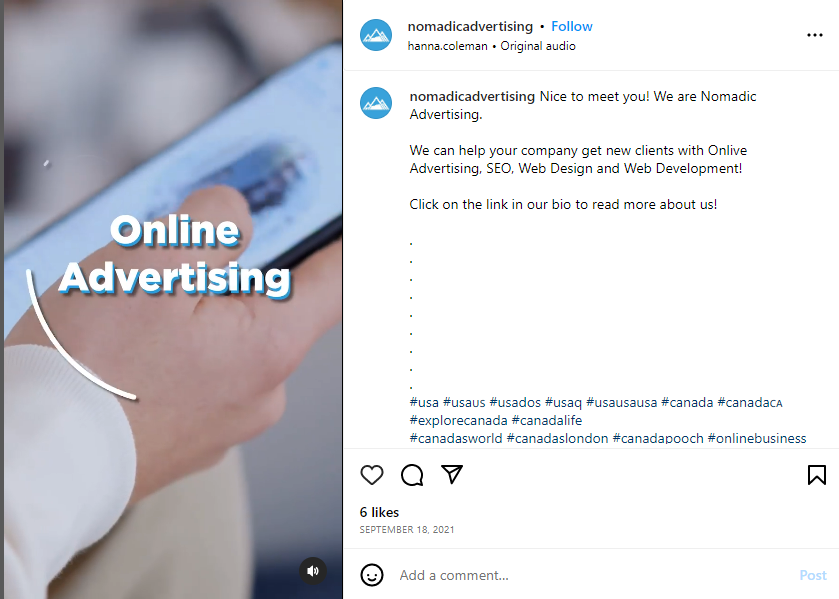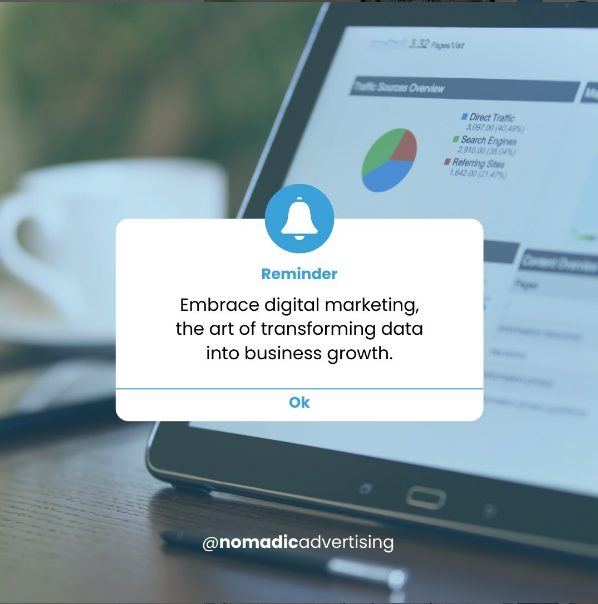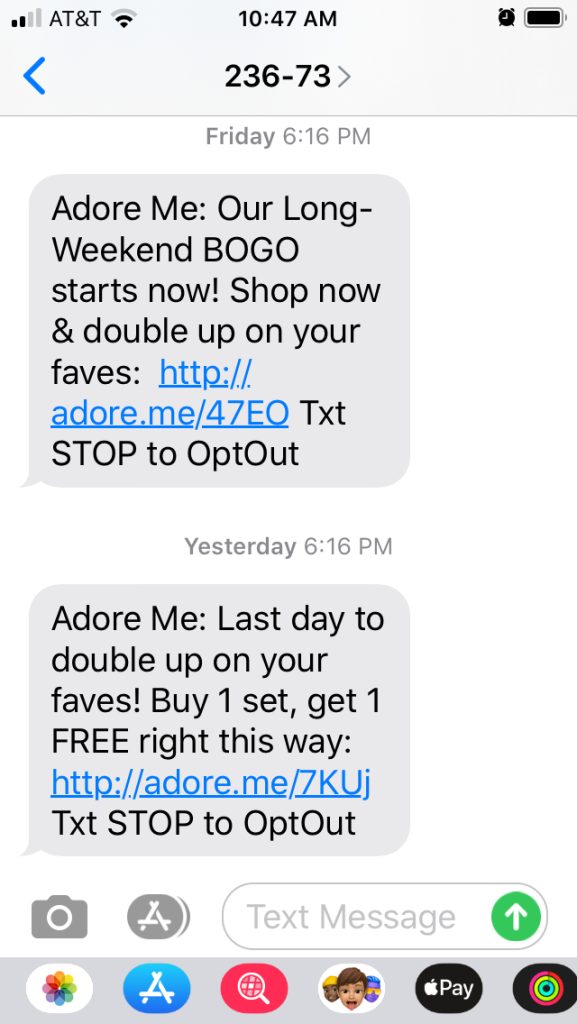In this digital age considering mobile users is key when developing a business marketing strategy. This is because there are billions of people accessing the internet from their mobile devices. Mobile content marketing has several benefits! Optimizing your marketing content for mobile devices will help in reaching a large target audience, which will significantly help your business grow. Creating an effective strategy can be challenging, which is why we want to help you. In this article, we will provide you with our mobile content marketing tips so you can get started.
Why mobile marketing is important
Over half of the organic internet traffic comes from mobile devices. Mobile marketing has become essential in this age as mobile devices have become the main way of accessing the internet.
The following are reasons why mobile marketing is important:
Precise targeting
We use mobile marketing to precisely target our selected business demographic. Mobile devices provide us with valuable insight into users’ purchasing intent and history. We use data, such as behavior and location, to deliver targeted digital marketing messages. This way, we can easily reach potential customers interested in our products at the right time and create an effective targeted campaign.
Improved engagement rates
Mobile marketing provides us with several effective channels we can use to engage our customers. Some of these mobile channels include SMS marketing, push notifications, mobile apps, and social media. Using these channels, we have direct access to our customers and are able to build relationships, which in turn generate leads and increase sales.
Competitive advantage
Mobile devices have become something individuals cannot live without and is a key part of their daily activities. Small businesses that fail to invest in mobile marketing would fall behind their competitors. By implementing mobile marketing strategies, we can make our business stand out from competitors. We are able to boost our social media presence and generate organic traffic to our websites.
Cost-effective
Compared to other marketing channels, mobile marketing is much more cost-effective. We are able to reach a large mobile audience at minimal cost. With mobile marketing, we can track and measure the effectiveness of our advertisements in real-time using tools like Google Analytics. This provides us with valuable insight and data on what is working or not. This enables us to make adjustments accordingly and improve our campaigns’ effectiveness, which in turn provides a high ROI.

What does a content strategy for mobile look like?
When developing a content strategy for mobile marketing, there are several principles we consider. We follow these basic principles to create the best mobile experience that will engage smartphone users and also drive conversions.
When developing content for mobile devices, we first ensure it is:
- Easily digestible
- Optimized for touch navigation
- And that it loads quickly
To that end, it is essential to keep your paragraphs short, between 4-5 lines, and use subheadings or lists and bullet points. Also, ensure that the font you use is legible and fit for phone screens.
Another basic principle is considering how you want your content to be distributed and promoted. It is very important to tailor your content and message to the type of channel you are using and its audience. A few channels we use in reaching mobile users include social media and email marketing. For social media, a short informative video with good visuals would perform well, but that wouldn’t be the same for email marketing.

Types of mobile marketing
There are several types of mobile marketing that we use in connecting with our users. The form of content strategy we follow depends on which type of mobile marketing we are implementing. Here are the main types of mobile marketing we use:
Social media marketing
Several individuals access social media platforms daily. These platforms have become an integral part of people’s lives and a basic form of communication. Major social media apps with billions of active users include Facebook, Twitter, WhatsApp, and Instagram. Due to the number of active individuals using these platforms daily, they have become major marketing channels. Social media marketing typically involves developing and sharing content that advertises your services, products, and brand to these social platforms.
This content could be in the form of images, tests, or short/long videos. Most of these social platforms have special features that make it easier for businesses to create engaging content and easily reach a wider audience. With social media marketing, you can increase brand awareness, drive traffic to your business website and boost sales. Social media marketing is also a budget-friendly form of mobile marketing that helps to create a community for your brand and target demographics.

In-Game Marketing
Mobile games are a favorite pastime. Both kids and adults love to play games on the go using their mobile devices. For some, it’s a recreational activity, a way of unwinding, or even a source of income. Due to the rise of mobile gaming, this form of marketing has become a lucrative and effective way for businesses in certain industries or niches to reach their target audience.
In-game marketing is when you place your business ads in mobile games. In-game marketing could be in the form of sponsored content, popup or banner ads, and interactive placements. When considering in-game marketing, you have to ensure that your brand’s content or product aligns with the game’s theme. If it doesn’t, there’s a high chance users won’t engage with your content. In-game marketing is the best option to aid in enhancing business growth in the mobile gaming space.
SMS Marketing

This is one of the earlier forms of mobile ad campaigns. SMS (short message service) was a convenient and cost-effective way to communicate with users. SMS marketing, also known as mobile text message marketing, involves sending time-sensitive deals and promotions to your potential customers’ mobile phones.
This form of mobile advertising is considered very powerful because SMS has high engagement rates. This is because most individuals have their phones with them or close by most of the time, and they get notifications for incoming messages. However, SMS marketing requires businesses to get permission from the user. Unless a user opts in for SMS marketing, businesses can’t send SMS texts.
App-Based Marketing
In this age, app-based marketing is one of the most common types of mobile advertising. There are millions of apps on Play Store and App Store. App-based marketing typically involves leveraging mobile apps to promote your business products and services. One way to go about app-based marketing is by developing your brand app.
Branded mobile apps make it easier to engage with your audience. It can also help in tracking and understanding their behaviors and purchase intent, which can help in creating personalized content for your customers. By developing your own branded app, you send push notifications to keep your customers engaged and offer exclusive deals. Other forms of app-based marketing include in-app purchases, ads, and sponsored content.
Create the ultimate mobile content marketing strategy in 2023
Creating the ultimate mobile content marketing strategy in 2023 requires a comprehensive approach that leverages the latest trends and technologies to engage with customers and drive business growth. Here are the latest tips and features that will set apart a company’s mobile content marketing strategy in 2023:
Optimize for voice search
There has been a recent rise in the use of smart speakers and voice assistants. This is why optimizing mobile content for voice search is essential. By using natural language and long-tail keywords, you can ensure that your content appears in voice search results.
Use Social Media
Social media platforms are perfect for mobile marketing as most people access social media via their mobile devices. Digital marketing agencies use these platforms to promote products and services because of the billions of active users they have. Start by developing a social media strategy that targets your audience. You can do this by creating mobile-friendly content that can be shared and engaged with on these platforms.
Embrace Interactive Content
Examples of interactive content include quizzes, polls, and games. This is one of the best ways to engage users and find out their search or purchase intent. By creating interactive content, businesses can engage with their audience, increase brand awareness, and drive user engagement.
Mobile Video Marketing
Mobile video marketing has become essential for marketing in this age. About 98 % of individuals between the age groups of 18-34 watch videos on their mobile devices every day. Most people find it easier to watch a video than read a description, hence the sudden rise in popularity and importance of mobile video marketing.
This form of marketing involves creating and promoting video content that we have optimized for viewing on mobile devices. This type of marketing can be done using short or long-form videos and live videos. By creating a comprehensive mobile video marketing strategy, we are able to get high click-through rates and conversions.
Mobile SEO checklist
Mobile SEO entails optimizing your website and content for mobile devices. With several users accessing the internet through mobile devices, it is important that your content and websites are optimized for search engines. Understanding the relationship between mobile and SEO is important for a business’s growth or expansion, and mobile SEO has a significant impact on your mobile content marketing strategy.
Here is a checklist of important mobile SEO aspects we keep in mind when creating a mobile marketing strategy:
- Keyword research
Conducting thorough keyword research is a crucial aspect of mobile SEO strategy. Start by identifying keywords and phrases that your target audience will likely search for related to your business. This will help in creating targets and effective content. You can also use tools like Google keyword planner to help in identifying keywords.
- Content creation
Creating mobile-friendly content is crucial. Your content should be optimized for mobile viewing. It should include short paragraphs, and clear titles. Also, optimize all images and videos by using appropriate file formats and providing alt text for accessibility. This will ensure your content displays well and mobile phone users can easily digest it.
- Mobile-optimized website design
When creating a mobile content strategy, a mobile-friendly website is essential to engage and convert mobile users. Ensure that your website has a responsive design, is easy to navigate, and has fast loading times. This is to provide an optimal customer experience.
- Local SEO
If your business has a physical location, optimize your content for local SEO. This includes creating a Google My Business account and adding your store to the Google Maps. When creating content, you should also include location-based keywords. This will improve your visibility in local search results.
- Mobile site structure
The structure of the mobile version of your website is very important:
- Use a clear site structure and URL hierarchy.
- Use descriptive titles for each page that accurately reflect the content on the page.
- Avoid using long, confusing URLs. This helps both users and search engines understand the purpose of each page. It also makes it easy for mobile search engines to crawl and index your content.
A mobile-first content strategy
Mobile first means creating a campaign that prioritizes mobile users over desktop users mainly for your marketing campaign. The mobile-first strategy is a user-first approach that has become essential in reaching and engaging customers. For a mobile-first content strategy, you have to adapt your content for mobile devices’ resolutions and screen sizes. When creating a mobile-first content strategy, there are several basic essentials to keep in mind:
- Speed: Mobile users have little patience for slow-loading websites and content. Businesses should create a mobile version of their website and optimize their content for fast loading times. This is to improve the user experience and reduce bounce rates.
- Clear and concise messaging: Ensure your messaging is clear and concise. It shouldn’t be too complex that viewers cannot grasp it in the first few seconds. Use subheadings, bullet points, and lists to break up your points and segment your content so it is easy to digest.
- Visual appeal: Mobile screens are smaller than desktops, so it is highly important for businesses to use visually appealing content that will capture their viewer’s attention. Always use high-quality images, videos, and graphics to make your content more engaging.
What is an example of mobile content?
Any type of content designed and optimized for viewing on a mobile device can be considered mobile content. An example of mobile content is a blog post that is written to be easily read on a mobile device. These blog posts have short paragraphs, several subheadings that break the text up into sections, and engaging visuals.
What are other examples of content marketing?
Content marketing is a strategic marketing approach that involves creating and sharing valuable, relevant, and consistent content. Businesses and individuals do content marketing to attract and retain a clearly defined audience. Examples of content marketing include:
- Videos
- Social media posts
- Email marketing campaigns
- Product demos
- White papers
- Infographics
- Blog posts
- How-to guides and tutorials
- Newsletter
To wrap things up…
Having a well-crafted mobile content marketing strategy can increase brand awareness, attract and retain customers, and ultimately drive profitable actions. At Nomadic Advertising, we specialize in creating customized mobile content marketing strategies that cater to the specific needs of businesses. We offer a range of services, including mobile website design, search engine optimization, and PPC ad management. Our team of experts has a deep understanding of the latest mobile marketing trends and techniques. Contact us to book a FREE 30-minute strategy session and learn how we can help your business stay ahead of the competition.
FAQ
1. What are the 5 elements of mobile marketing?
Elements of mobile marketing are the various factors that make up a successful mobile marketing campaign. The 5 elements of mobile marketing include an optimized website, high-quality content, mobile apps, mobile ads, and location-based marketing.
2. Why is mobile marketing effective?
Mobile marketing is effective because several people access the internet using their mobile devices. So through mobile marketing, businesses can reach a wide audience by targeting mobile users. Additionally, mobile marketing can be highly interactive as there are various forms businesses can use to showcase their products and services.
3. How to start with mobile marketing?
Businesses can start with mobile marketing by first identifying their target demographic and understanding their intents. After identifying your target audience, develop a mobile-friendly website and create mobile-optimized content.
4. What are mobile marketing channels?
Mobile marketing channels are platforms you can use to reach and interact with potential customers. Major mobile marketing channels include mobile apps, social media platforms, and SMS push notifications.
5. What is the difference between SEO and mobile Optimisation?
Search engine optimization (SEO) is the practice of optimizing a website to improve its visibility and ranking on search engine results pages. Mobile optimization involves designing and optimizing a website specifically for mobile devices.
6. Does SEO work on mobile?
Yes, SEO works on mobile devices. Search engines, such as Google, use the same ranking algorithms for both desktop and mobile search results. However, mobile SEO is necessary to ensure that a website is mobile-friendly and easily accessible on smartphones and tablets.





